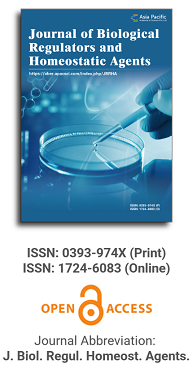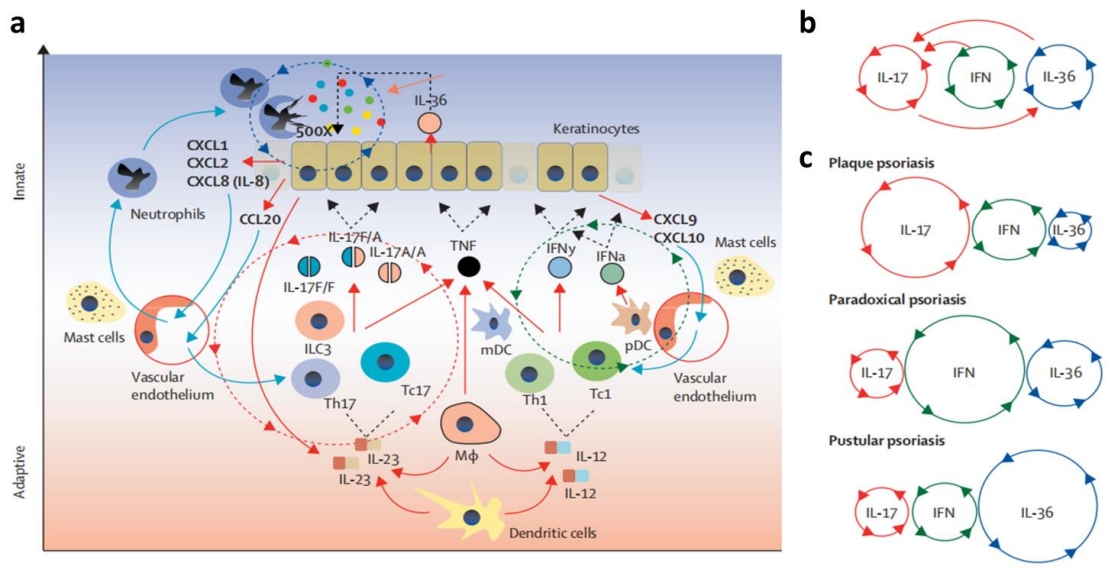
Publication Frequency
Quarterly since 2025
Journal Articles
Search
Search scope
Journal Center
Asia Pacific Academy of Science Pte. Ltd. (APACSCI) specializes in international journal publishing. APACSCI adopts the open access publishing model and provides an important communication bridge for academic groups whose interest fields include engineering, technology, medicine, computer, mathematics, agriculture and forestry, and environment.
Volume Arrangement
2025
Featured Articles

Psoriasis is a common, chronic, and inflammatory skin disease. Macrophages account for about 61.3% of the inflammatory cells infiltrating psoriatic lesions. Modulating macrophage polarization, inhibiting their infiltration, and targeting the secretion of inflammatory factors and associated inflammatory pathways by these cells can alleviate psoriasis symptoms and inflammation. Moreover, nanomaterials as novel drug carriers, offer unique advantages such as large surface area, easy modification, high biocompatibility, good biodegradability, enhanced systemic adsorption, etc. Nanomaterials have great potential for efficient drug delivery and release, as well as improving therapeutic efficacy while reducing adverse effects. By systematically addressing the role of macrophages in psoriasis pathogenesis and the potential of nanomaterials in treating psoriasis through modulating macrophages, this review enhances our understanding of the disease mechanism and holds promise for novel therapeutic breakthroughs and advancements in the future treatment of psoriasis.
Effects of Histone Deacetylase 2 onEpithelial-Mesenchymal Transition in PulmonaryFibrosis
Article ID: 3509
Vol 39, Issue 1, 2025
DOI: https://doi.org/10.23812/j.biol.regul.homeost.agents.20253901.10
Vol 39, Issue 1, 2025
Received: 15 November 2024; Accepted: 17 December 2024; Available online: 16 January 2025; Issue release: 31 January 2025
Download PDF
Abstract
Background: Pulmonary fibrosis (PF) is a chronic and progressive interstitial lung disease. Histone deacetylases (HDACs) play
a crucial role in the onset and development of PF. Changes in HDACs 1–10 expression levels occur during PF development, and
their specific roles remain unclear. Therefore, we elucidated changes in the gene and protein levels of HDACs 1–10. Furthermore,
we selectively knocked down HDAC2 to explore the molecular mechanism underlying the regulatory role of HDAC2 in epithelialmesenchymal transition (EMT) during the development of PF.
Methods: Lewis lung carcinoma (LLC) cells were stimulated with transforming growth factor-β1 (TGF-β1) (5 ng/mL) to establish
a lung fibrosis cell model. Additionally, C57BL/6 mice received bleomycin through single intratracheal instillation at a 3.5 mg/kg
volume, diluted in 0.7 mL saline. Furthermore, EMT-related gene and protein expression levels were assessed using quantitative
PCR (qPCR) and Western blotting, respectively.
Results: We observed that HDAC2 expression levels were significantly increased in both the in vitro and in vivo PF models.
HDAC2 knockdown significantly decreased the expression levels of fibrosis indicators such as collagen type I (Col-I) and collagen
type IV (Col-IV), and EMT indicator α-smooth muscle actin (α-SMA) was observed. Conversely, it increased the expression
of EMT indicator E-cadherin (E-cad). Hematoxylin and eosin (H&E) and Masso staining revealed that HDAC2 knockdown
substantially reduced the degree of pulmonary fibrosis. These findings suggest that lowering HDAC2 expression inhibits EMT
and reduces PF. Moreover, in a TGF-β1-induced lung fibrosis cell model, HDAC2 knockdown significantly reduced epithelial
growth factor receptor levels, which inhibited mitogen-activated protein kinases (MAPK) signaling and decreased the protein
expression of p38 and c-Jun N-terminal kinase (JNK).
Conclusions: HDAC2 knockdown effectively impedes EMT and diminishes PF severity, impacting the JNK/p38 MAPK signaling
pathway, which may serve an inhibitory function.
Keywords
pulmonary fibrosis; HDAC2; epithelial-mesenchymal transition; JNK/p38 MAPK signaling pathways
References
Supporting Agencies
Copyright (c) 2025 Yu Liu,Songjun Shao,Yu Tan,Shanyu Wang,Peng Zheng,Jing Han,Ying Zhao,Shanshan Rao

This site is licensed under a Creative Commons Attribution 4.0 International License (CC BY 4.0).
Editor-in-Chief

Medical Genetics, University of Torino Medical School, Italy
Co-Editor-in-Chief

Department of Biomedical, Surgical and Dental Sciences, University of Milan, Italy
Indexing & Archiving
News & Announcements
2025-02-01
In addition to the first issue that has already been published by the original publisher, there will be four more issues released this year, with scheduled publication dates in March, June, September, and December respectively.
2025-01-21
Starting from Volume 39 Issue 2 (2025), the ownership of Journal of Biological Regulators and Homeostatic Agents (ISSN: 0393-974X (P); 1724-6083 (O)) will be transferred from Biolife Sas to Asia Pacific Academy of Science Pte. Ltd. As of 21 January 2025, authors should make submissions to the new journal system and follow the author guidelines. Asia Pacific Academy of Science Pte. Ltd. will take over the publication of manuscripts being processed.

